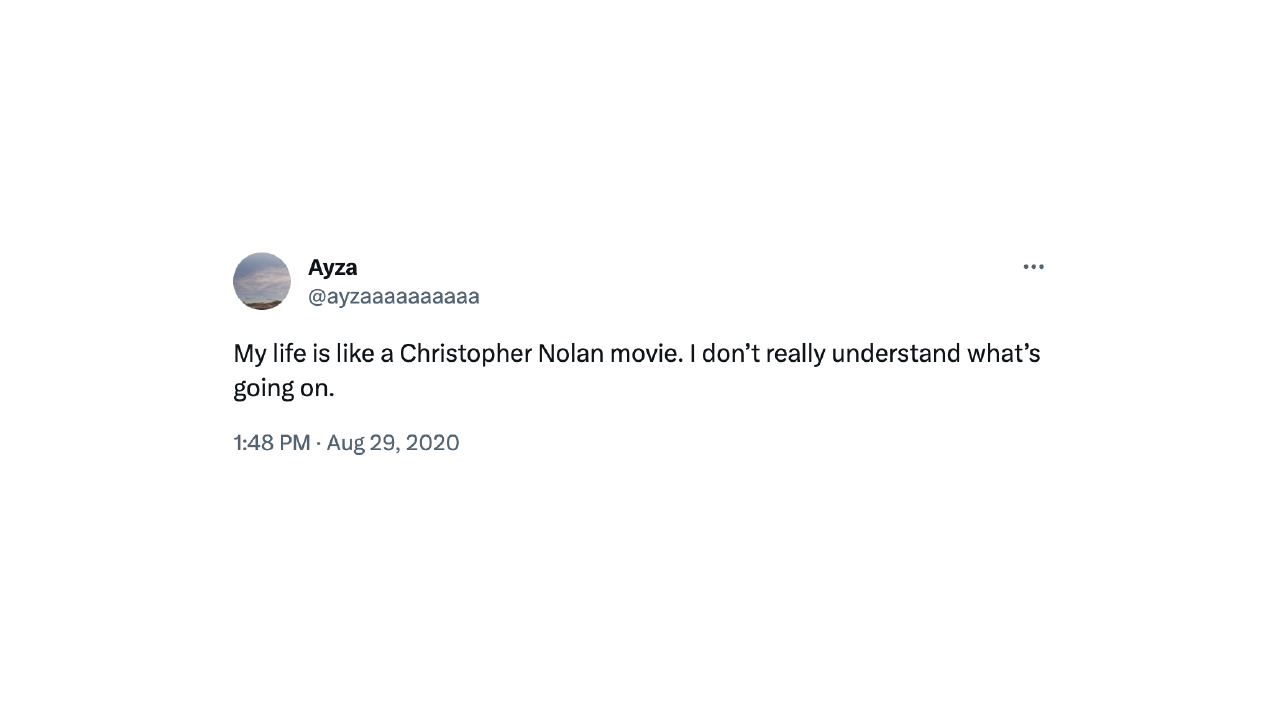Just like Ayza, lots of people leave the cinema thinking "Hé?!" after watching a Christopher Nolan movie. Given the timing of the tweet, it looks like Ayza might be talking about "Tenet", which is indeed next-level confusing.
Nolan's newest movie, "Oppenheimer," is a bit less tricky but just as awesome, if not more. Even though it's three hours long, it keeps you glued to the screen from the start to the finish. The best part? You're always eager to know what comes next. Imagine if our lectures could be just as exciting! That's why I think we should study Nolan's style and see how we can use it to make teaching more fun. Let's dive into that today.
Nolan often uses something called non-linear, or non-chronological storytelling. That's just a fancy way of saying that he doesn't tell a story from start to finish in order. Sometimes, it may mean starting the story from the middle, a trick called 'in medias res', and then going back to the beginning. Here is an example:
But there are loads of other ways to mix up a story's order. "Oppenheimer" does this brilliantly. I won't give too much away, but I'd recommend you to watch "Oppenheimer" to see how Nolan does it.
